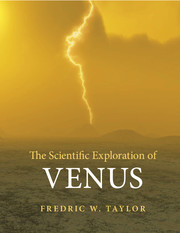Book contents
- Frontmatter
- Contents
- Overview
- Prologue
- A note on scientific units
- Acknowledgements
- Part I Views of Venus, from the beginning to the present day
- Part II The motivation to continue the quest
- Part III Plans and visions for the future
- Epilogue
- References and acknowledgements
- Appendix A Chronology of space missions to Venus
- Appendix B Data about Venus
- Index
- Plate section
Overview
Published online by Cambridge University Press: 05 September 2014
- Frontmatter
- Contents
- Overview
- Prologue
- A note on scientific units
- Acknowledgements
- Part I Views of Venus, from the beginning to the present day
- Part II The motivation to continue the quest
- Part III Plans and visions for the future
- Epilogue
- References and acknowledgements
- Appendix A Chronology of space missions to Venus
- Appendix B Data about Venus
- Index
- Plate section
Summary
Venus is well known to everyone as the brightest star in the evening or morning sky. Of course, this brilliant stellar object is not actually a star, but a planet, the closest to Earth and, it turns out, the one that most resembles our own world in size and composition. It should therefore be the easiest to explore by astronomers observing fromthe Earth with telescopes, and indeed there is a history of Venus observations that extends back to the earliest recorded times. However, as observations got better with the invention and improvement of the telescope, the result was often frustration because so little detail could be seen on our bright neighbour. Instead it was found that the surface is shrouded, apparently at all times and at all places, by thick layers of nearly featureless cloud. It was not until the first spacecraft arrived, just half a century ago, that the true character of Venus began to be revealed.
This book presents an account of the exploration of Venus, from the earliest days to the latest research using planetary space missions. It also ventures some visions of the distant future when Venus is explored by humans, and might once again have an Earthlike climate (if indeed it once did in the past, as many scientists believe). The space projects and other types of investigation are covered in some detail, especially their scientific objectives and accomplishments.
- Type
- Chapter
- Information
- The Scientific Exploration of Venus , pp. xi - xiiPublisher: Cambridge University PressPrint publication year: 2014



